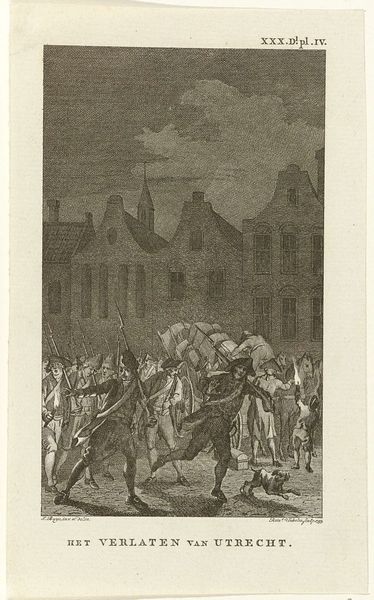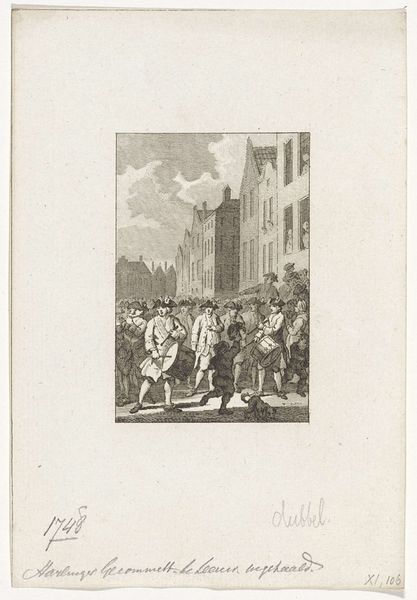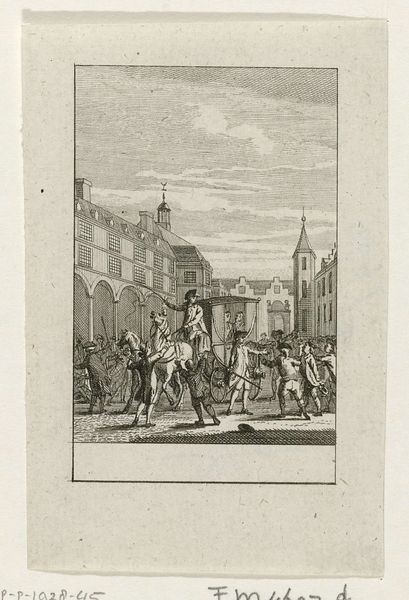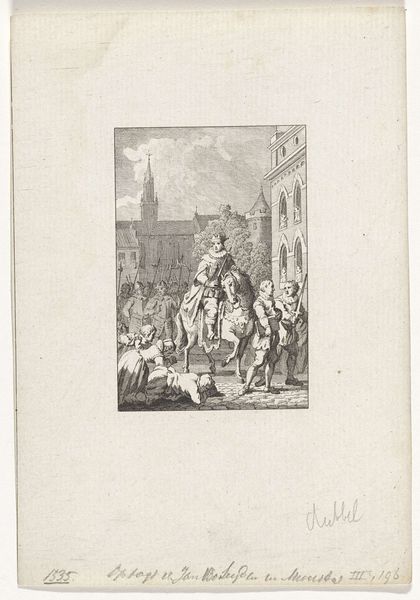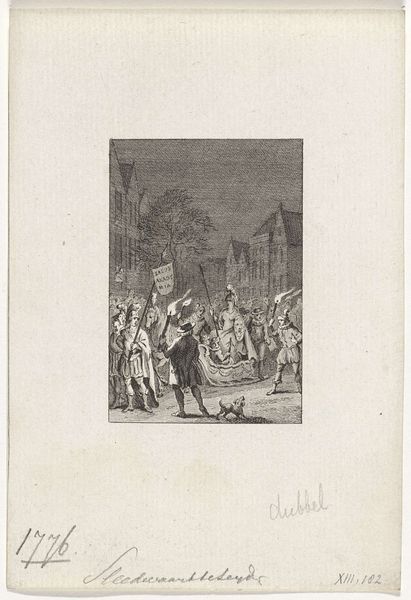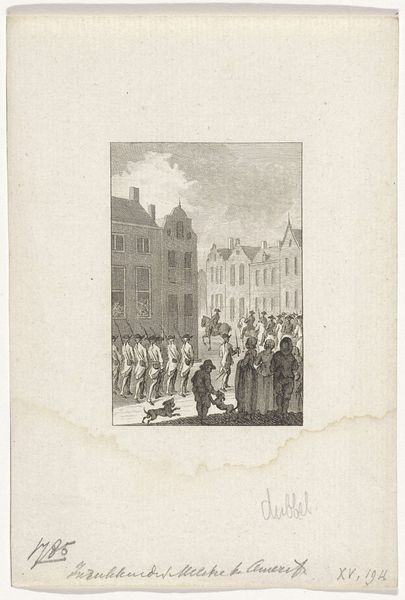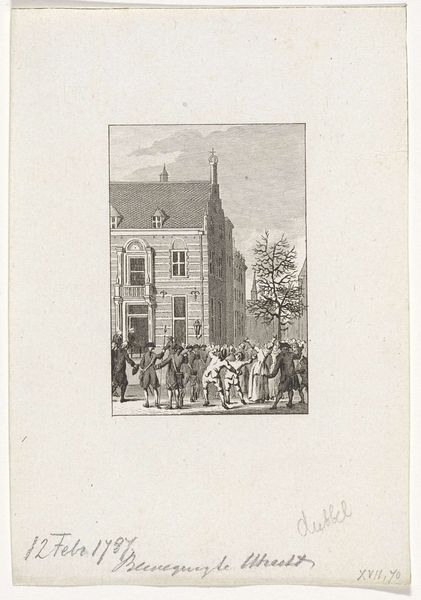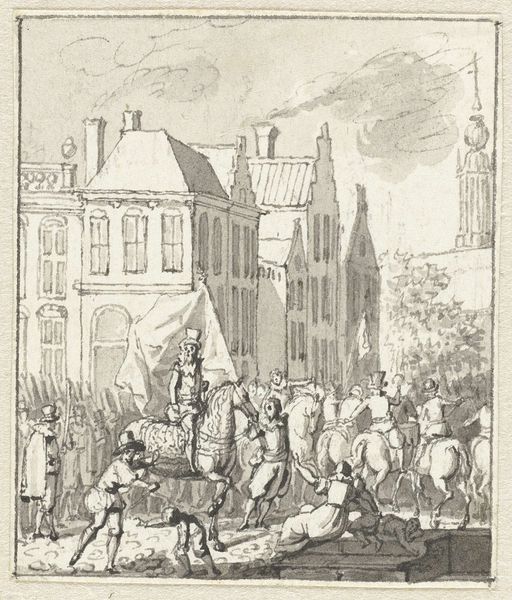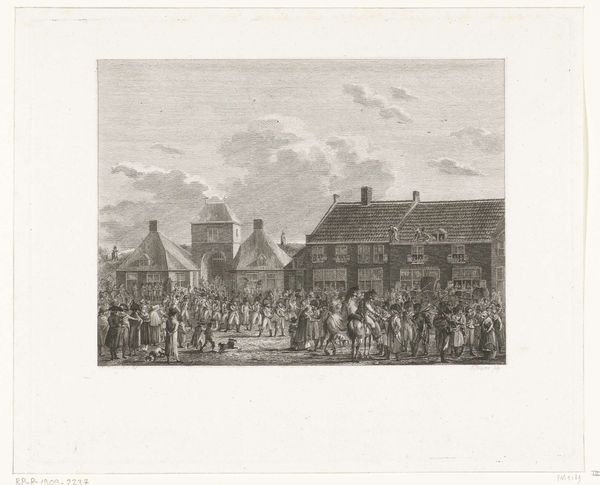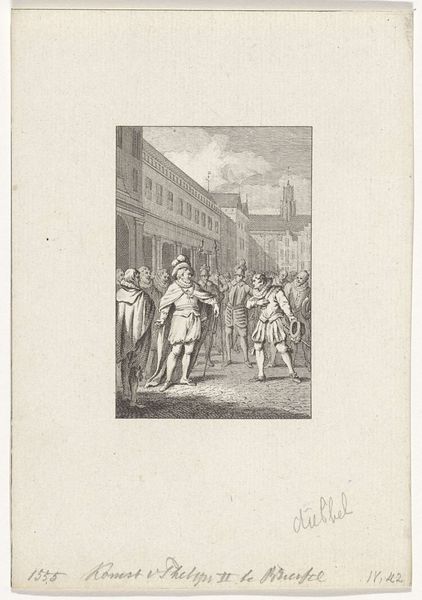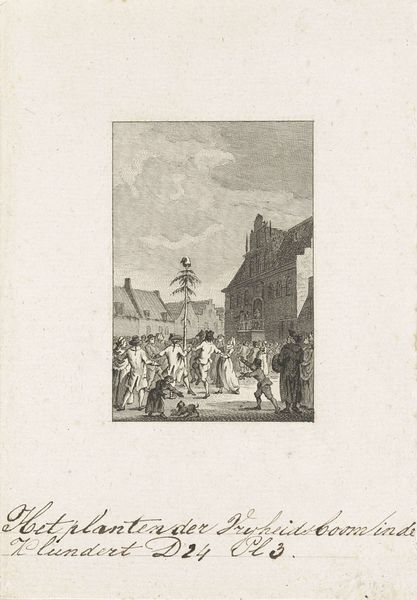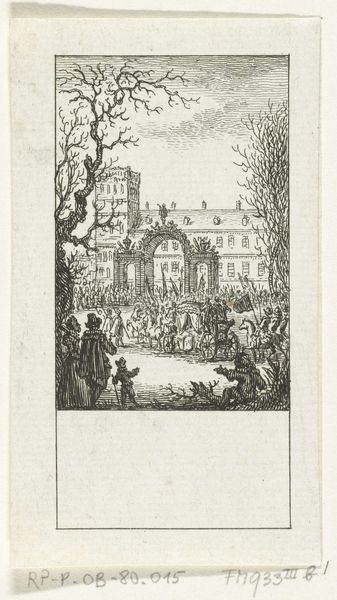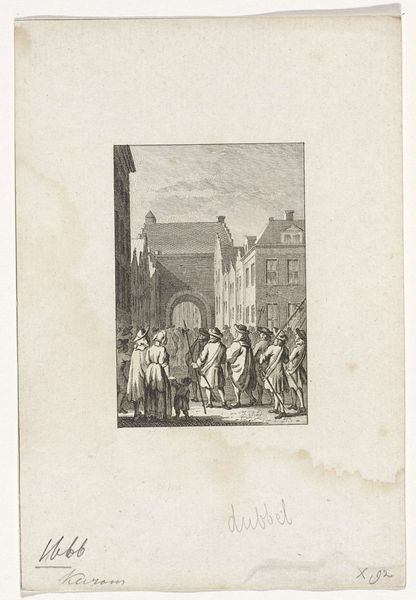
print, engraving
#
dutch-golden-age
# print
#
old engraving style
#
traditional media
#
figuration
#
line
#
genre-painting
#
history-painting
#
engraving
#
realism
Dimensions: height 126 mm, width 95 mm
Copyright: Rijks Museum: Open Domain
Curator: Here we have Reinier Vinkeles' engraving, "The Dismissal of the 'waardgelders' in Utrecht, 1618," created sometime between 1780 and 1795. It's currently held in the collection of the Rijksmuseum. Editor: My first impression is how chaotic it feels. The figures are rendered with such precise linework, but their actions suggest a real tension and perhaps a moment of forced upheaval. Curator: Absolutely. The artwork depicts a pivotal moment of political and religious conflict in Dutch history. The 'waardgelders' were essentially mercenary troops hired by city governments. In this instance, they were dismissed to reduce the influence of the Counter-Remonstrants faction in Utrecht. The scene symbolizes the triumph of one side in the religious and political struggle of the time. Editor: You can see the remnants of power being dismantled right in the foreground. There are muskets scattered on the ground, almost like broken toys, while several figures work at tearing something apart, perhaps a barricade. The artist uses very deliberate lines to create form and volume, and I find myself moving back and forth between different clusters of people. It looks carefully structured. Curator: Precisely. Consider the context: this engraving, though created much later, reflects enduring tensions and power dynamics inherent in Dutch society, specifically, class, religious factionalism, and political autonomy. This isn't just a record of a single historical event; it engages with ongoing power structures, highlighting themes of control and resistance that still resonate. Editor: I'm struck by how the architectural background, with its ordered windows and solid structure, provides a stark contrast to the disorder and physical labour happening in front of it. Curator: An important element for considering what the dominant powers have at stake in controlling the narrative of these historicised moments. By rendering these moments through print, how can these tensions become normalized? Editor: A clever thought. This has encouraged me to consider the work and the event depicted within it through multiple lenses. It’s fascinating how form and historical context combine to create such a rich narrative. Curator: Agreed. It’s through exploring these interconnections between power, class, and cultural memory that we truly appreciate the multilayered complexities within Vinkeles' work.
Comments
No comments
Be the first to comment and join the conversation on the ultimate creative platform.
